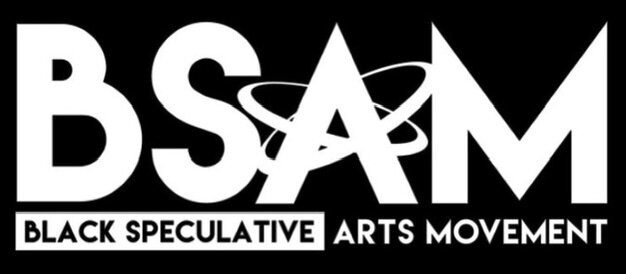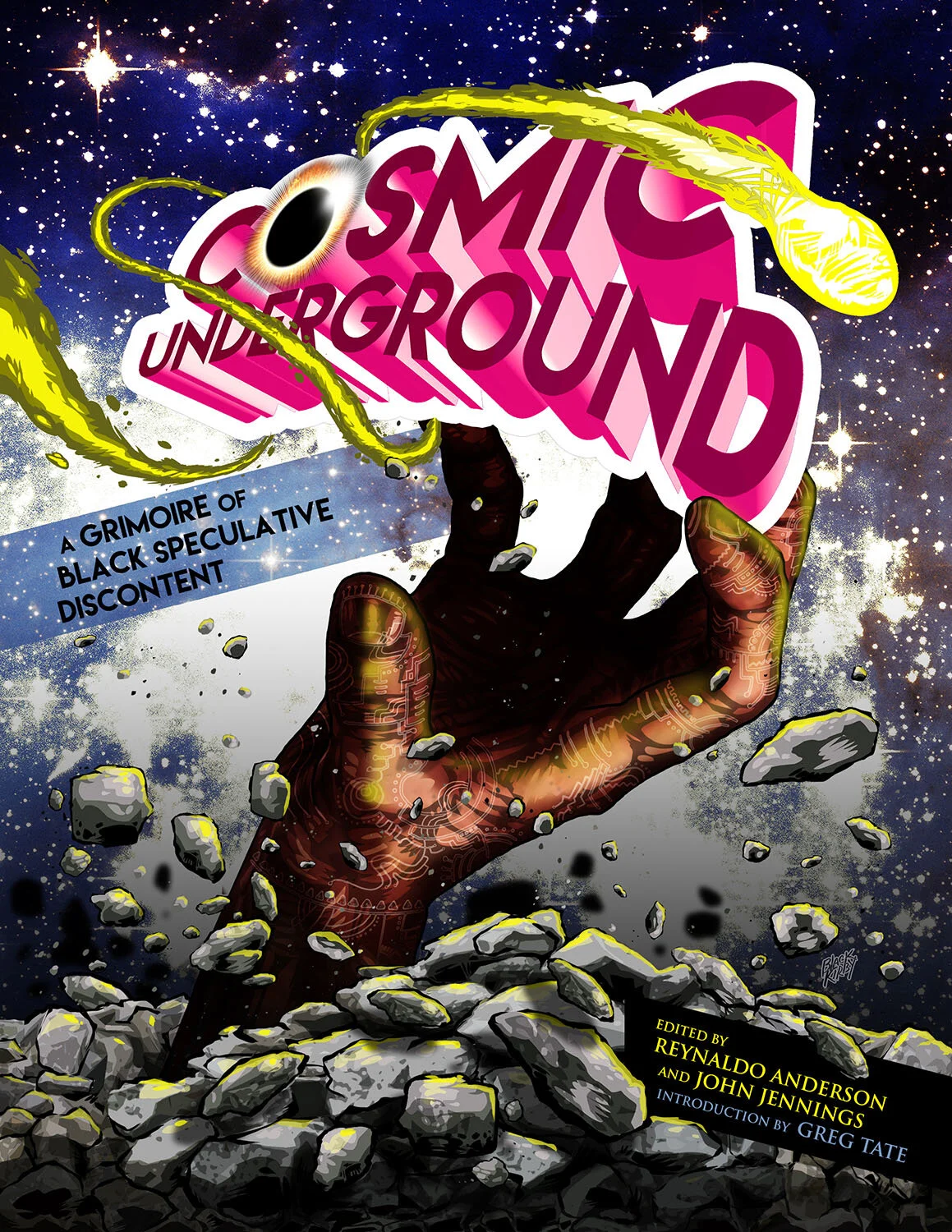Welcome to The Black Speculative Arts Movement!
Afrofuturism 2.0: The Rise of Astro-Blackness, the cover was designed by John Jennings, an artist and scholar who coined the term Black Speculative Arts Movement
“There was a restlessness in the creative community at the beginning this decade, a dissatisfaction with a certain aspect with politics going on, and a desire to get the art and political ideas a platform. That lead to us forming, putting together the exhibition and then me subsequently writing the manifesto for the movement.”
Dr. Reynaldo Anderson
Associate Professor of Africology and African American Studies at Temple University.
The Black Speculative Arts Movement
Anderson’s manifesto centered around one of BSAM’s central themes:
Afrofuturism 2.0
The concept builds on the first Afrofuturism movement beginning in the mid-1990s, combining science fiction, music and technology to imagine a fictionalized society through the Arts. Anderson said this new wave is inspiring creatives around the world.
“Afrofuturists kind of have this after-the-end-of-the-world type of sensibility in terms of how they approach their art or how they forecast their creative expressions,” Anderson said. “Not everybody necessarily has a dystopian vision. Some have a utopian perspective that the future could possibly be better.”
Afrofuturism 2.0 is an emerging Pan-African transnational, trans-contextual, techno-cultural social philosophy characterized by other dimensions that include African or African diasporic metaphysics, aesthetics, Social Sciences (such as Afrocentricity, Black/African feminist and womanist thought, and Black queer practice), theoretical and applied science, and programmatic spaces.
The previous iteration of Afrofuturism was an African-American-centric post-Cold War framework based on the notion of a “digital divide” and the growth of the popular use of the internet by the mid-1990s. However, the contemporary second wave of Afrofuturism is a global 21st-century Pan-African response to the growth of social media platforms and digital technologies.
Why do we call it Afrofuturism and not just sci-fi?
What we now call Afrofuturism (or the Black speculative tradition) and the largely white male Eurocentric science fiction tradition developed during the genesis of the industrial revolution, global slave trade and emergence of modern science.
However, Black speculative thought was conceived in the 19th century and early 20th by diasporic African writers and leaders such as Martin Delany, Pauline Hopkins and WEB Du Bois. The Black speculative tradition is a response to the Western transatlantic and Arab slave trade, scientific racism and white supremacist global hegemony as a Utopian antidote in pursuit of freedom; the emergence of Western science fiction develops as a reaction to the European enlightenment project focused on progress.
The Black or African speculative tradition has been overlooked and understudied due to factors such as colonialism, enslavement, Western thievery, capitalist misuse and appropriation, destruction of African schools of thought, and mental colonization of people of African descent. The practice of Black/African speculative thought and practice has survived under ground and is witnessing a renaissance due to the declining spiritual and intellectual influence of the West and the desire for people to seek other alternatives.





